#musa tropical
Text
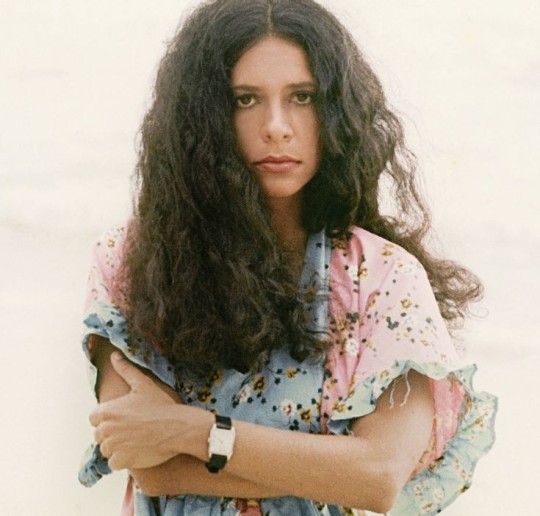
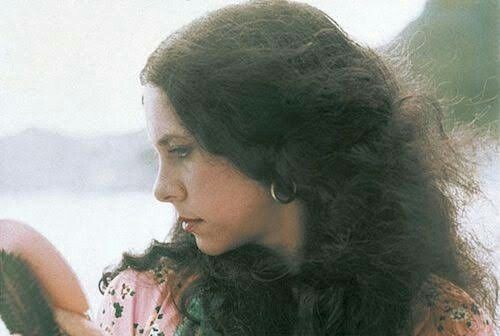
Gal Costa ⭑ ・ ゚ ゚・: *: ・ ゚ ★
#gal costa#gal costa icons#mpb#bossa nova#pop brasil#pop brasileiro#brazilian music#brazil#Brasil#tropical music#1970s music#70s#tropicalismo#musa tropical#música popular brasileira#1960s#brazilian culture#cultura pop#mpb icons#brazilian women#braziliansource#cultura brasileira#meu nome é gal
128 notes
·
View notes
Text


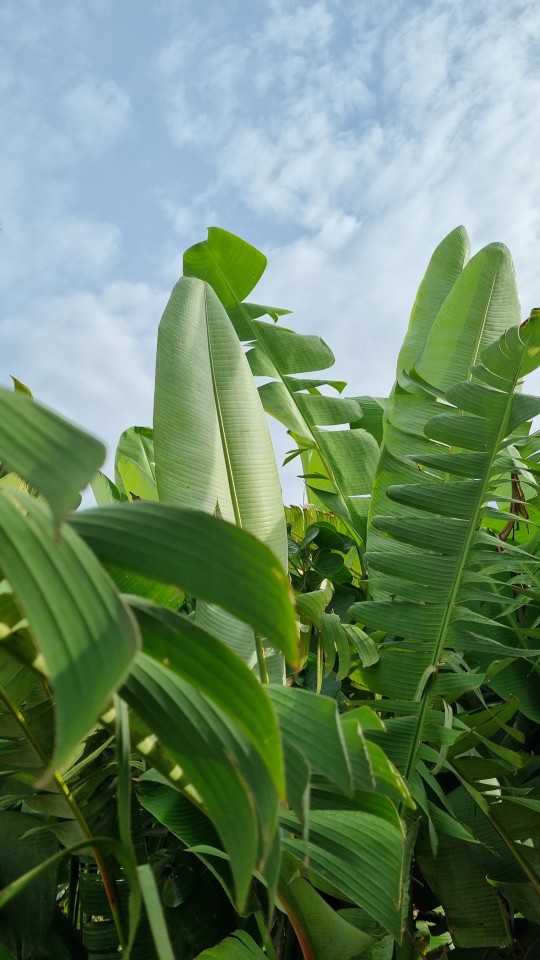
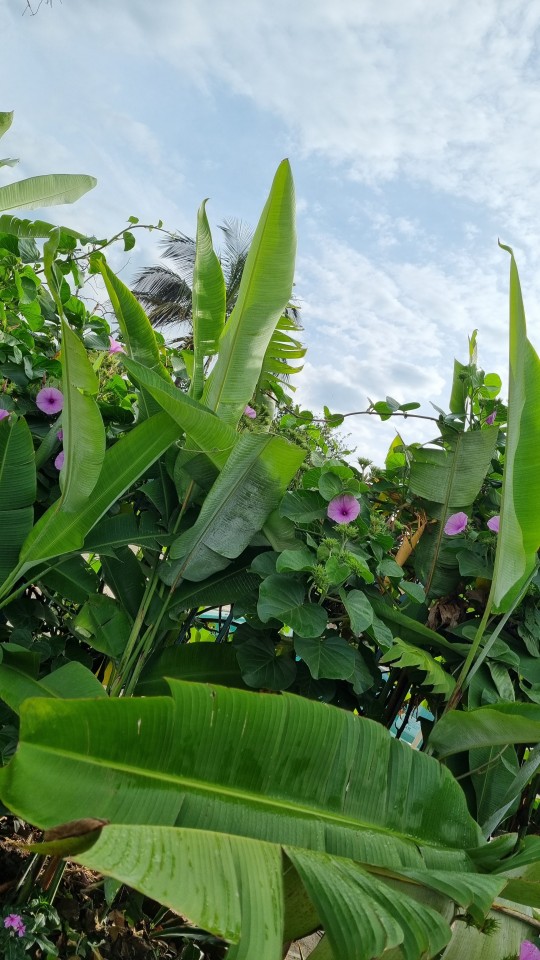
Musa
#tropical#plants#garden#nature#botany#leaves#photographers on tumblr#photographers of colour#original photographers#bananas#plantain#musa
16 notes
·
View notes
Text
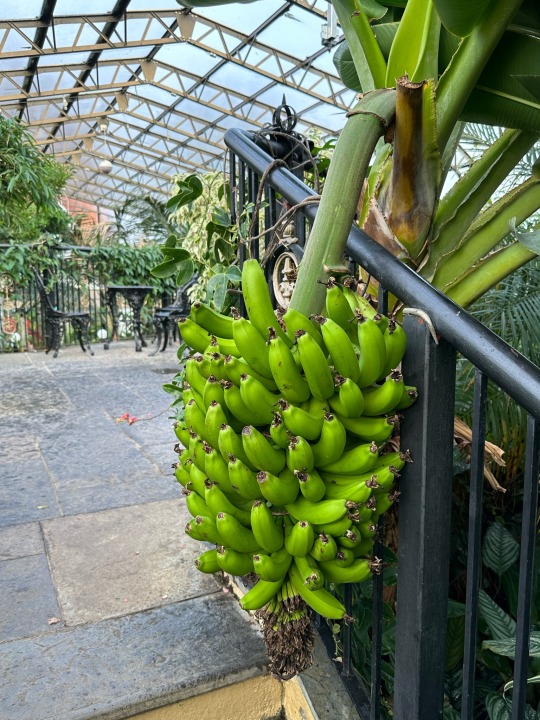

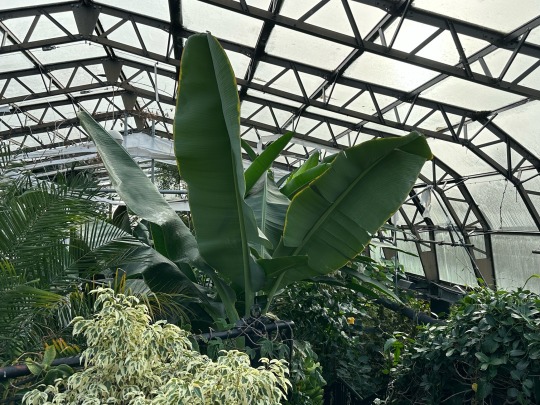
Plant of the Day
Sunday 21 January 2024
In a tropical glasshouse this Musa cultivar (cultivated banana) has managed to produce fruit. The banana is a large, tropical herbaceous plant.
Jill Raggett
51 notes
·
View notes
Text
twst ethnicity & language hcs 🦇
THANK U EVERYONE ON TWITTER WHO SUBMITTED HCS!! This thread took me forever, pls forgive an punctuation/general writing inconsistencies or spelling errors
warnings: none
last updated: apr 11, 2024
some collective headcanons:
i think the characters who are close to each other share words with each other and everyone kind of mixes things up (projecting)
"que... 为什么 es 你的 kouting 说了吗?!"
???? i hope this makes sense
all of them swear in their native languages when angry (minus riddle)
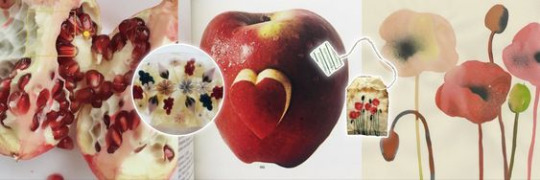
HEARTSLABYUL 🍓
Riddle: White British & Kinh Vietnamese, speaks Vietnamese
╰Mom: 🇻🇳 Dad: 🇬🇧
this hc is based on my vietnamese friend whos mom is the same as riddles
thank you for the hc nhi ily
Ace: Filipino, speaks Tagalog
constantly using "nanay mo" (your mom) insults
Deuce: Han Taiwanese & Yamato Japanese, speaks (正體字) Mandarin
╰Mom: 🇹🇼 Dad: 🇯🇵
his mom and ahgong speak hokkien and he doesnt, he also struggles to read traditional characters
his mom gave birth to him when she was a teen and she doesn't know the father so he's not too connected to his JP side
Cater: Hispanic Filipino of British Latin descent, speaks Filipino and Spanish
Trey: Malay Indonesian, speaks Indonesian and Malay

SAVANACLAW 🥩
Leona: Tanzanian, Kikuyu Kenyan, Malian (Mandinke)
╰Mom: 🇹🇿🇰🇪 Dad: 🇹🇿🇲🇱
i know he sucks his teeth all the damn time
tsk get out of my way herbivore tsk ugh tsk
ghana is one of the only african countries that still have a monarchy
also the lion king is based off of Mansa Musa the Malian king so YA
Ruggie: Afro-Brazilian & Gullah, speaks Southern Tutnese, Gullah, & Brazilian Portugese
╰Mom: 🇧🇷 Dad: 🇺🇸
projection beam
uses tutnese to be sneaky, Gullah with his grandma
i know the soul food in his house on sunday goes CRAZY
more connected to his Gullah side because his grandma is AA and he doesnt know his brazilian parent, but does try to learn more about the culture just for himself
Jack: Inuit Alaskan, Tarabin Bedouin Afro-Egyptian, speaks Arabic
╰Mom: 🇪🇬 Dad: "🇺🇸"
no one submitted hcs for jacky wacky...
well he speaks the Masri dialect methinks

OCTAINEVILLE 🐚
HONORABLE MENTION: someone said they hc the octatrio speak Danish with an Omal dialect!
Azul: White Italian/Hawaiian/Afro-Hatian, speaks Hatian Creole and some Italian
╰Mom: 🇮🇹🇭🇹 Bio dad: Hawaiian
His step dad is also Hawaiian so he was able to keep that culture as well
Apparently octopi are very important to polynesian culture! very interesting
The reason the tweels don't let him cook is actually because all of his creations come out so spicy and flavorful it started scaring white customers
Floyd: Okinawan Japanese/Afro-Bajan, speaks Japanese & Patois
╰Mom: 🇯🇵 Dad: 🇯🇵🇧🇧
I think the tweels are more connected to their Japanese side than their Caribbean side, but Floyd says "gwan" all the time so who knows
He often mixes Japanese and common language. Not because he isn't fluent in common language but because he wants to
When cooking he tries to combine both cultures (sooo much curry...)
Jade: Okinawan Japanese/Afro-Bajan, speaks Japanese & Patois
Both Japan and Trinidad and Tobago have really cool tropical landscapes so i think hed be super proud of his ethnicity (AKA the greenery from where hes from)
AH i forgot to mention, but to keep up with the islander theme from the OG movies i think the tweels would be more from the Okinawa region

SCARABIA 🌞
Kalim: Punjabi Pakistani, speaks Urdu
ok i said this on twitter but i think he tries to learn Arabic for Jamil (he's awful at it but he is TRYING!)
i also said methinks he likes how the word for "no" in Arabic sounds like "la"
whenever jamil tries to make him productive he goes "lalalala" and thinks hes the funniest person in the entire world
Jamil: Persian Iranian, speaks the Syrian Arabic dialect & Urdu
always talking shit about people in arabic
especially kalim, but kalim doesnt know how to say "lazy bastard" in Arabic yet so he is oblivious

POMEFIORE 👑
Vil: Jewish German-American, speaks Hebrew, French, Russian, & Spanish
╰Mom: 🇩🇪🇺🇸 Dad: 🇮🇳
looks almost completely white
she speaks so many languages mostly for her acting career
Rook: Zulu South African, Baoulé Ivorian, Canadian French, speaks French
╰Mom: 🇨🇮🇿🇦 Dad: 🇨🇦🇿🇦
when they came to NRC they weren't fluent in the common language but sam (louisianan, speaks French Creole) helped them, as well as vil who speaks french
now theyre more fluent in common language but still has a thick Montreal accent
has that phlegm-y "h" sound in the back of their throat
Epel: Laz Turkish & Southern American, speaks English and Kartvelian
╰Mom: 🇹🇷 Dad: 🇺🇸
when speaking english he has a little southern accent :3
hes always confusing the languages he knows if the words are too similar, he also has a little Turkish accent
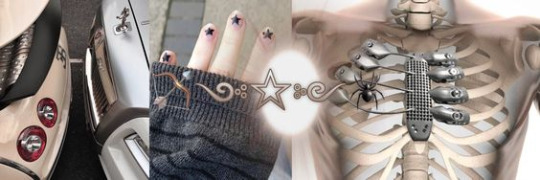
IGNEHYDE 💀
Idia: Romani Greek & Turkish, white Puerto Rican, speaks Greek and Spanish
╰Mom: 🇵🇷 Dad: 🇹🇷🇬🇷
cursing people out in rapid greek and/or spanish in COD lobbies
i also think he learned like 3 Greek poems just so he could qrt people on twitter who he disagreed with
"those who can not obtain the grape will say it is sour" but like in Greek

DIASOMNIA 🐉
Malleus: Han Chinese, speaks Mandarin, Gaelic, & a shit ton of other languages
mostly speaks Mandarin
can read/write traditional and simplified characters!
HONORABLE MENTION: someone hced him as having Jewish descent and speaking Hebrew!
Lilia: Mongolian & Chinese, speaks Cantonese, Mandarin, Gaelic, and a shit ton of other ancient languages
i think he speaks with a Northern Chinese dialect in Mandarin, I dont speak Canto or Hokkien so idk about that srry :,3
he drawls his 儿s a lot methinks mostly to get a point a cross
Sebek: Egyptian, Nenet Russian, Han Chinese, speaks Cantonese & some Gaelic
╰Mom: 🇷🇺🇪🇬 Dad: 🇨🇳
is trying really hard to be fluent in Gaelic so he can impress malleus
he already knew some Gaelic but just basic words/sentences
Silver: Han Taiwanese, Tibetan, & French speaks Mandarin
╰Mom: 🇨🇳🇹🇼 Dad: 🇫🇷
the difference between Taiwanese pronunciation vs Chinese pronunciation is that it sounds... "softer" (?)
with his character as a whole just having more slurred, soft words makes sense.
maybe he knows how to say like "hello" and "please" in Gaelic because he was pretty young when Lilia brought him in and he naturally picked up like... two words
also i hc he is tibetan because the wiki page said sleeping beauty is set in the himalayas? so i just ran with it LOL
#THIS TOOK SO FUCKING LONG#twisted wonderland#twst headcanons#twst#heartslabyul#savanaclaw#octavinelle#pomefiore#ignihyde#diasomnia#headcanons#projecting#hcs#twsthc
86 notes
·
View notes
Text
What if Fate: The Winx Saga was written by a Winx fan
Part 1: Runtime and Synopsis
Season 1: Witness the Winx Club as you have never seen them before! Join Bloom, a natural girl that wants to be supernatural, as she uncovers the secrets of her magical destiny. Along the way, Bloom will face many trials and tribulations, but all of them can be overcome with the help of her four girl-friends! But does Bloom really have what it takes to stop the force that threatens the Magical Dimension...
Season 1 Runtime: 12 episodes, 26 minutes long.
Season 2: The Trix have been defeated and Magix saved... but we all know what comes next! Join Aisha, the princess of Andros Igbi as she embarks on a quest to defeat the horrifying Dark Phoenix! Aisha will not complete her goal alone, she has the help of the Winx Club!
Season 2 Runtime: 16 episodes, 26 minutes
Season 3 (Finale): It's finally time to end the Y2K Epic! The Winx Club are facing their strongest foe yet, the evil wizard Valtor! Friends, family, home worlds, nothing is out of reach for him. Can the Winx Club endure against this threat, or does this modern retelling have a nasty plot twist...
Season 3 Runtime: 14 episodes, 26 minutes, 52 minute finale special episode.
Part 2: Main Characters
The Winx Club
Bloom Peters
Fairy of the Dragon Flame
Fallen princess of Domino
Is Abigail Cowen
Protagonist of Season 1; the plot is mostly focused on her learning the secrets of her past while also learning and growing as a person. Deutagonist of Season 2; is a mostly static character that who is defined by her relationship with Aisha and the mysterious new teacher. Deutagonist, for the first two thirds, and Protagonist, for the last third, of season 3; has finished her development that started in Season 1 by the start of this season but has a close relationship with the main villain and too much screen time.
Princess Stellaria Lumen of Solaria & Selenetrix
Fairy of the Sun and Moon
White Latina/ Spainard coded
Nickname: Stella
Deutagonist of Season 1; has the most direct involvement with Bloom's plot line. Her plot is coming to terms with the fact that her parents only had her to save their (political) marriage, with help grom her friends! Is a major character in Seasons 2 and 3 with complete development and has a mini arc in season 3.
Flora Esperanza Garcia Rosas
Fairy of Nature
Puerto Rico coded and plus size
From the planet Lymphea, a tropical world full of exotic forests and islands.
A major character in Season 1; sets up her character arc of struggling with her insecurities but dosen't have a conclusion. Tertagonist (is that a word?) Of season 2, her character arc is finnally concluded where she accepts herself for who she is. A major character in season 3 with complete development.
Has a cousin named Terra who's family has been in Alfea for generations.
Ming Zhang
Fairy of Music and Sound
Disgraced princess of Melody Xuánlu, the Realm of Harmony. Musa's father, one of two imperial princes, lost his title when he had a child with a common woman
Chinese coded
Nickname: Musa
A major character in seasons 1 and 2; her plotline is learning to open herself up emotionally to others after dealing with the death of her mother... and Riven. A Tertagonist to Deutagonist in Season 3, her character development regresses because of youknowwhat and she develops a special hatred of Valtor
T-90
Fairy of Technology
Caucasian coded
Citizen of the Planet Zenith, the Cyperpunk City of Innovation
Nickname: Tecna
A major character in seasons 1 and 2; her character arc if focused on accepting her emotions as a real and valid part of her identity. The Protagonist for 2/3s of season 3; Tecna is voted leader of the Winx Club which causes her to take a more active role in helping her friends work through their issues, even if it means making the ultimate sacrifice...
Princess Aisha Mustapha of Andros Igbi
Fairy of the Infinite Ocean
Is Precious Mustapha
Nickname: Layla
Introduced in Season 2 as the protagonist; the main plot is focused on her journey to defeat Lord Darkar while she also learns and grows as a person. A Major character in season 3 with completed character development; her new plotline is dealing with her stalker.
Part 3: Special effects
Fate: The Winx Saga primarily uses traditional/ oldschool horror effects (makeup, props, lighting, etc.) for the majority of it's scenes and magic stuff. CGI is almost only used for Fairy transformation sequnces and monsters.
The clothing of Fate: The Winx Saga is primarily Y2K fashion and aesthetics that are close to Y2K fashion (90s fashion, 2010s fashion, etc).
#winx club#fate the winx saga#anti fate the winx saga#lol#winx bloom#winx stella#winx flora#winx musa#winx tecna#winx aisha#winx layla#its basically the same as the show#but tecna is staying dead this time#cuz a main character staying dead is more adult#than pointless sex scenes#also sky is dying in season 3#that is the price bloom must pay for stealing everyones screen time#hope you like it fairies!#FtWs fans know your place#or dni
119 notes
·
View notes
Text
TROPIUS

Tropius is a Grass- and Flying- type Sauropod Pokémon, known for its symbiotic relationship with Musa acuminata, the most commonly known banana plant.
TAXONOMY
Tropius is a sauropod dinosaur of the family brachiosauridae, currently the only known sauropod with a wild population. The smallest known sauropod, it is believed to be the result of island dwarfism. Tropius’ common name comes from “Tropical,” both for its habitat and appearance, and “-saurus,” a term commonly used to refer to large reptiles. Tropius was formerly classified as a Symbiotic Pokémon, but Tropius’ plants are lost and regrown frequently, while a true Symbiotic Pokémon consists of the same individuals throughout entire stages.
DESCRIPTION
Tropius are quadrupedal reptiles with short hind legs, long necks, and no tails. They have rough, brown skin and yellow claws. They are 2 meters long and weigh 100 kg. Tropius cover themselves in soil and grow banana plants directly on their bodies. These plants grow over the Tropius, covering its body with a layer similar to leaf stalks to give Tropius its usual woody appearance. In addition, leaves grow over the Tropius’ head and shoulders. Tropius grow large, sturdy leaves from their back that they can move with specialized muscles to use as wings. These leaves are primarily used for temperature control but are strong enough for the Tropius to fly long distances during migration.
The banana plant’s life cycle remains similar on the Tropius as it would in the ground. The banana plant is composed of many individual stems and propagates over time, with the Tropius discarding older stems to allow new growth. Bananas will sprout near the top of the Tropius’ neck when it is approximately two years of age and every six months thereafter.
Tropius prefer temperatures around 26°C and are extremely sensitive to both heat and cold. Overheated Tropius become agitated and reckless while cold causes them to become slow and lethargic.

HABITAT
Tropius live in tropical jungles, though may occasionally be found outside of that range during warmer months. Tropius do not have set migration paths and instead roam constantly in search of food sources and appropriate weather.
BEHAVIOR
Tropius walk or fly long distances in search of fresh fruit to eat and may stay in an area as long as fruit remains available. Tropius supplement this diet by eating leaves, including excess leaves from their own plant, and small insects, many of which attempt to eat their plant. They seek out areas with comfortable temperatures and spend much of their time resting, letting their plants take in sunlight and adjusting their leaves to help control their temperature. When resting a Tropius will dig a shallow hole to sit in soil.
Tropius are social creatures that will travel in herds when food is abundant but may scatter as food is scarce. Females are more likely to gather than males, and Tropius in herds may groom each other by nibbling excess vegetation and insects from hard to reach places. Tropius are rarely violent and react to most threats by digging their feet into the ground and flapping their leaves hard enough to blow smaller creatures away. They may ‘battle’ each other in this way, doing no permanent harm to the other’s body but potentially damaging their plants.
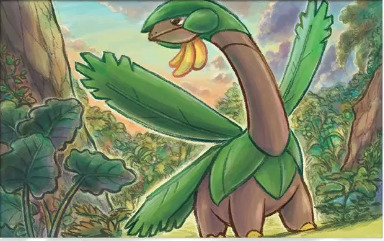
REPRODUCTION
When a male Tropius’ plant bears fruit, he will actively seek a mate. Males entice females with offers of bananas, showing off the health of their fruit as a sign of their own success and fitness. The couple may mate multiple times, though once the male’s bananas are gone they are unlikely to remain together unless food is abundant nearby. The female will build a nest of leaves over the course of the following week, then lay a clutch of four to ten eggs.
Female Tropius will remain close to their nests for the six weeks it takes for the eggs to hatch, during which time she may be vulnerable. If other Tropius are nearby, they will assist in guarding the nest.
Once the eggs hatch, the mother feeds her young her own bananas for the first few weeks of their life and helps them to cultivate their first seeds. Tropius hatchlings are 0.3 meters long, have no visible plant growth until two months of age and do not grow their leaf ‘wings’ until nine months. Once their wings have grown, they may leave their mother.
Female Tropius with no young will feed and care for other young Tropius or creatures of similar size or coloration. Tropius have been seen ‘adopting’ Patrat, Zigzagoon, immature Pinsir, and human children.

HARVESTING BANANAS
Tropius bananas are particularly sweet and are considered a delicacy. Tropius ranching must be done in large greenhouses to ensure proper temperature control and access to sunlight. These ranches primarily raise female Tropius and keep males only for breeding. In areas with wild Tropius, children are often sent out to politely request bananas. Many trainers supplement their income by harvesting and selling their Tropius’ bananas. Though these bananas have a very short shelf life, the advent of digital item storage has significantly increased the ability for them to be sold all around the world.
23 notes
·
View notes
Text
Winx Club: Musa's Frutti Music Bar —Aesthetic

Frutti Music Bar
The Frutti Music Bar is a local juice bar located in Gardenia by the beach. It's owned by Klaus. He and his daugher, Roxy, work there. In addition, the Specialists and Nabu work there waiting tables temporarily. Inside is a large stage where Andy and his band sometimes play. This tropical themed place is also the primary hangout for the Winx. After they formed a band, they also performed.
12 notes
·
View notes
Text
WEEK FIVE LINEUP
I don't really have much to say here. When this posts(insert time here) I will be reopening submissions! So get ready for that (but please don't flood my form too much). Remember to take a quick look at the weekly lineups before you send in a character if you want to make sure they haven't been submitted yet!
Yuu Suzuno - King of Prism
Zhou Zishu - Word of Honor
Ai Hayasaka - Kaguya-sama: Love is War
Layla Hamilton - Kaleido Star
Hank - To the Abandoned Sacred Beasts
Musa Kamara - Run with the Wind
Yin Fu - Xuan Yuan Sword Luminary
Rain Mikamura - Mobile Fighter G Gundam
Cure Passion - Fresh Precure
John Marston - Red Dead Redemption 1 & 2
Hop - Pokémon
Ai Haibara - Detective Conan
Sailor Saturn - Sailor Moon
Squilliam Fancyson - Spongebob Squarepants
Natarle Badgiruel - Mobile Suit Gundam SEED
Budwin - Papa Louie
Kaito - Ajin
Satou - Ajin
Minato Arisato - Persona 3
Shou - Akumetsu
Hijikata Mamoru - Until Death Do Us Part
Sarah Connor - Terminator
Sisirinah - Warbreaker
Beatriz Pinzón Solano - Yo Soy Betty, la Fea
Noah - Xenoblade Chronicles 3
Alvis - Xenoblade Chronicles
Full Frontal - Mobile Suit Gundam Unicorn RE:0096
Cypher (Amir el Amari) - Valorant
Daud - Dishonored
Emily Kaldwin - Dishonored
Jinx - Arcane
Nickel - Inanimate Insanity
Florida - Welcome to the Table
Fey Truscott-Sade - Doctor Who
Kroton the Cyberman - Doctor Who
Morbius - Doctor Who
Ralph Wiggum - The Simpsons
Ned Leeds - Spiderman (Marvel Cinematic Universe)
Penny - Stardew Valley
Pam - Stardew Valley
Kanao Tsuyuri - Demon Slayer
Kazuki Nishina - King of Prism / Pretty Rhythm
eShop Bag - Nintendo 3DS eShop
Arcade Bunny - Nintendo Badge Arcade
Ace Ikebukuro - King of Prism
Mario - PriPara
Mr. AR - AR Games
Kururun - Tropical Rouge PreCure
StreetPass Bunny - StreetPass Mii Plaza
Ushimitsu - Idol Land PriPara
Final Boss (aka Disco) - Face Raiders
Shinji Aragaki - Persona 3
Kicks - Animal Crossing
Sabine - Star Stable Online
Langa Hasegawa - Sk8 the Infinity
Kouji Mihama - King of Prism / Pretty Rhythm
Hayami Hiro - King of Prism / Pretty Rhythm
Bluestar - Warrior Cats
Toma Ibuki - Waccha PriMagi
Nobuyuki Kai - Haikyuu
Sir Gilbert - Animal Jam
Minamoto Kou - Toilet Bound Hanako Kun (TBHK)
Yukina - Kabaneri of the Iron Fortress
Elle Woods - Legally Blonde
Chase McCain - LEGO City Undercover
Grimace - McDonald’s
Irresponsible Dad - Happy Wheels
V1 - ULTRAKILL
Topher Bus - Clone High
Moon Lord - Terraria
Therion - Octopath Traveler
Popcorn - Showvember
Eddy - Wii Sports Resort
Shaggy Rogers - Scooby-Doo
William Afton - Five Nights At Freddy’s
Mario - Super Mario
Oatchi - Pikmin 4
Moss - Pikmin 4
Miguel O’Hara - Across the Spiderverse
Tallahasse - Zombieland
Envelope - Animated Inanimate Battle
Nick Jr. Face - Nick Jr. bumpers
Muschio Malto - Divequest
Penny - Brawl Stars
PearlescentMoon - Double Life
The Narrator - Fight Club
Bora - Tally Hall Internet Show
Nanami Kiryuu - Revolutionary Girl Utena
Engine Room - Wii Sports Baseball Championship series
Lemmy Koopa - Super Mario
Anybodys - West Side Story
Garfield - Garfield
Maerad of Pellinor - The Books of Pellinor
Frankie Stein - Monster High Gen 3
Rapunzel - Neverafter, Dimension 20
Tabaqui the Jackal - The Gray House
Asa Mitaka - Chainsaw Man
Grell Sutcliff - Black Butler
Spamton G. Spamton - Deltarune
Neptune - Neptunia
#not a poll#the week ahead#I always get excited when I see characters I know here. Mainly because I don't know many
19 notes
·
View notes
Text
youtube
Jerry is north of Brisbane to visit a home gardener who has built a remarkable food garden over a decade, that enabled her to avoid food shopping for an entire year. Subscribe 🔔 http://ab.co/GA-subscribe
Around 15 years ago Sonia and her partner Rob decided they wanted to start building a food garden. “We never did a plan. We just did it bit by bit. We based it on convenience; we walk here so let’s plant here. It just evolved over time.”
In 2019, Sonia set out on a remarkable challenge to eat 100% of her diet from her garden. “It was just to see if I could do it.”
“I did go to bed hungry a couple of times, but only a couple. It was challenging at times. I really missed bread, but it was really amazing the connection I felt to the garden. I’d love to do it again one day. Especially now that I have honey!”
Growing enough food to live off is a huge achievement, and the fruit trees here would have helped immensely. This area holds a litany of temperate, subtropical and tropical fruit trees; loquat, wampis, bananas, citrus, mulberry and peaches to name just a few. The food forest understory is edible too, with smaller cover crops like pepino and nasturtium.
Sonia has a rare passionfruit species to offer Jerry to try. “It’s a Japanese hard-shelled passionfruit (Passiflora maliformis). You crack the shell with a hammer like a nut, and the flesh is a really creamy passionfruit flavour.”
Nearby, Sonia has an entire area of the garden dedicated to native food plants. Here you’ll find native nutmeg (Myristica insipida, ground kernel used as spice), Fraser Island Apple (Acronychia imperforate, small sweet yellow fruits), white aspen (Acronychia oblongifolia, aromatic white fruit with a pine/mango flavour). She points out the native mulberry (Pipturus argenteus) as her favourite.
Adjacent is an area that Sonia has converted from annual crops into perennial, ornamental natives. Since taking up beekeeping (both stingless and European), Sonia’s been conscious about including more year-round flowering plants in her garden, and to this end, has callistemon, banksia and grevillea planted to help out her growing collection of hives.
Sonia’s not only managing to line her own belly, she’s providing a resource for her community. Out the front of their place she’s set up a stall selling her excess produce, and it’s become very well known in the community. The honesty-based payment system has been such a success, it’s funding Sonia’s holidays, and she feels like people may be putting in extra money - such is the appreciation for her produce.
“We had hard clay at first. It was terrible. We get free mulch from the tip and we have a big trailer. We’ve put down about 150 loads of mulch, and the soil’s improved.” Also enlisted in the soil-improvement effort is a compost bin painted like a pig. “We call her Gloria the compost pig. When she’s full we say ‘it’s time for her to spill her guts.’“
Sonia’s built an impressive food garden in her backyard and achieved something most only dream of by living off it. Her can-do attitude echoes Edmund Hilary and shows the power of starting with what you have, where you are and working bit by bit.
Featured Plants:
WAMPEE - Clausena lansium
LEMONADE TREE - Citrus cv.
BANANA - Musa cv.
PEACH ‘TROPIC BEAUTY’ - Prunus cv.
JABOTICABA - Plinia cauliflora
TAMARILLO - Solanum betaceum cv. *
PEPINO - Solanum muricatum
NASTURTIUM - Tropaeolum majus *
PASSIONFRUIT ‘JAPANESE HARDSHELL’ - Passiflora cv.
BANDICOOT BERRY - Leea indica
EMU BERRY - Grewia latifolia
BIGNAY - Antidesma bunius
WHITE SANDPAPER FIG - Ficus fraseri
CITRUS ‘RED CENTRE LIME’ - Citrus cv.
NATIVE MULBERRY - Pipturus argenteus
* Check before planting: this may be an environmental weed in your area
Filmed on Kabi Kabi Country | Morayfield, Qld
#gardening australia#Australia#solarpunk#brisbane#gardening#garden#food#fruit trees#trees#native plants#native species#compost bin#compost#Edmund Hilary#Youtube
49 notes
·
View notes
Photo

India - Karnataka - Hampi - Banana Plantagen
A banana is an edible fruit, botanically a berry, produced by several kinds of large herbaceous flowering plants in the genus Musa. (In some countries, bananas used for cooking may be called plantains.) The fruit is variable in size, color and firmness, but is usually elongated and curved, with soft flesh rich in starch covered with a rind which may be green, yellow, red, purple, or brown when ripe. The fruits grow in clusters hanging from the top of the plant. Almost all modern edible parthenocarpic (seedless) bananas come from two wild species – Musa acuminata and Musa balbisiana. The scientific names of most cultivated bananas are Musa acuminata, Musa balbisiana, and Musa × paradisiaca for the hybrid Musa acuminata × M. balbisiana, depending on their genomic constitution. The old scientific name Musa sapientum is no longer used.
Musa species are native to tropical Indomalaya and Australia, and are likely to have been first domesticated in Papua New Guinea. They are grown in at least 107 countries, primarily for their fruit, and to a lesser extent to make fiber, banana wine and banana beer and as ornamental plants.
Worldwide, there is no sharp distinction between "bananas" and "plantains". Especially in the Americas and Europe, "banana" usually refers to soft, sweet, dessert bananas, particularly those of the Cavendish group, which are the main exports from banana-growing countries. By contrast, Musa cultivars with firmer, starchier fruit are called "plantains". In other regions, such as Southeast Asia, many more kinds of banana are grown and eaten, so the simple two-fold distinction is not useful and is not made in local languages.
The term "banana" is also used as the common name for the plants which produce the fruit. This can extend to other members of the genus Musa like the scarlet banana (Musa coccinea), pink banana (Musa velutina) and the Fe'i bananas. It can also refer to members of the genus Ensete, like the snow banana (Ensete glaucum) and the economically important false banana (Ensete ventricosum). Both genera are classified under the banana family, Musaceae.
46 notes
·
View notes
Note
I just think the designers seriously struggled to make a water themed design. I think fusing harmonix and sirenix would solve a few thkngs
Oh yeah definitely, they had no clue what they were doing
As for the fusion....
If they turned the Harmonix trails into mermaid tails (or flipper feet) with the Sirenix tight patterns and fins, keep more of the harmonix hair styles with the Sirenix ABOVE WATER highlights, make the Harmonix skirts the size of the Sirenix skirts, throw ALL the ribbons into a pit of hell, stop what ever the fuck their doing with both of the samey tops and just commit to a bathing suit aesthetic and having them all look DIFFERENT, and give Aisha all the royal looking Harmonix stuff and everyone else gets the more interesting Sirenix accessories of coral and star fishes ect
And much to my chagrin, it would probably be smart to keep the Harmonix pastel color palette (bright saturated colors, I'm sorry I betrayed you like this), and it would also be smart to make the new tops match the fluffy look that Harmonix has
I do think they should really commit to the Sirenix fish and ocean accessories aesthetic it has going on, because they really half-assed it in Sirenix and actually committing would be cool
Like, like, here's some examples of pushing the Sirenix aesthetic and accessories harder
Stella can go in to very different directions. Either deep sea fish or lightest layer tropical fish. Deep sea fish bc make Stella bioluminescent, and tropical fish just match her vibe
(the best part is I think Stella would be freaked the fuck out by deep sea fish and think their the most ugliest and disgusting thing she's ever seen, like me ^^, which would be very funny)
Flora with a underwater plant aesthetic, dope, esp bc q lot of under ""plants"" are actually animals (ie coral and anemones). You know floating plants/fixed plants that grow underwater but stay above water for the sun?? I think something like that would be perfect for her. Something with Lily pads
Tecna with like a jelly fish or eel tail, so she can keep her weird girl enegry while still being a mermaid. If jelly fish, Tecna also is bioluminescent like Stella
Musa with a whale dolphin thing going on because they communicate with songs and such
Aisha and Bloom would keep the more classical mermaid look, but while Bloom is more Ariel, Aisha is rocking full Andros mermaid. Which look different. Bloom could have like a underwater animal thing going on with the coral, and Aisha gets full underwater queen
I'd also steal everyone's crown but Aisha's to emphasize this point. Maybe they can keep the really low detail circuits like Musa's Harmonix, but Aisha should be the only one with a full crown. It would be so cool, she is the queen of the ocean
This would influence the style of Harmonix top they'd have, any changes to the tail patterns (bc Bloom's and Tecna's leggings patterns are the only ones that really really match them), and accessories. So they'd each have their own individual ocean thing, influencing their designs
15 notes
·
View notes
Note

A banana is an elongated, edible fruit – botanically a berry[1][2] – produced by several kinds of large herbaceous flowering plants in the genus Musa.[3] In some countries, bananas used for cooking may be called "plantains", distinguishing them from dessert bananas. The fruit is variable in size, color, and firmness, but is usually elongated and curved, with soft flesh rich in starch covered with a rind, which may be green, yellow, red, purple, or brown when ripe. The fruits grow upward in clusters near the top of the plant. Almost all modern edible seedless (parthenocarp) bananas come from two wild species – Musa acuminata and Musa balbisiana. The scientific names of most cultivated bananas are Musa acuminata, Musa balbisiana, and Musa × paradisiaca for the hybrid Musa acuminata × M. balbisiana, depending on their genomic constitution. The old scientific name for this hybrid, Musa sapientum, is no longer used.
Musa species are native to tropical Indomalaya and Australia, and are likely to have been first domesticated in Papua New Guinea.[4][5] They are grown in 135 countries,[6] primarily for their fruit, and to a lesser extent to make fiber, banana wine, and banana beer, and as ornamental plants. The world's largest producers of bananas in 2017 were India and China, which together accounted for approximately 38% of total production.[7]
Worldwide, there is no sharp distinction between "bananas" and "plantains". Especially in the Americas and Europe, "banana" usually refers to soft, sweet, dessert bananas, particularly those of the Cavendish group, which are the main exports from banana-growing countries. By contrast, Musa cultivars with firmer, starchier fruit are called "plantains". In other regions, such as Southeast Asia, many more kinds of banana are grown and eaten, so the binary distinction is not as useful and is not made in local languages.
The term "banana" is also used as the common name for the plants that produce the fruit.[3] This can extend to other members of the genus Musa, such as the scarlet banana (Musa coccinea), the pink banana (Musa velutina), and the Fe'i bananas. It can also refer to members of the genus Ensete, such as the snow banana (Ensete glaucum) and the economically important false banana (Ensete ventricosum). Both genera are in the banana family, Musaceae.
The banana plant is the largest herbaceous flowering plant.[8] All the above-ground parts of a banana plant grow from a structure usually called a "corm".[9] Plants are normally tall and fairly sturdy with a treelike appearance, but what appears to be a trunk is actually a "false stem" or pseudostem. Bananas grow in a wide variety of soils, as long as the soil is at least 60 centimetres (2.0 ft) deep, has good drainage and is not compacted.[10] Banana plants are among the fastest growing of all plants, with daily surface growth rates recorded of 1.4 square metres (15 sq ft) to 1.6 square metres (17 sq ft).[11][12]
The leaves of banana plants are composed of a stalk (petiole) and a blade (lamina). The base of the petiole widens to form a sheath; the tightly packed sheaths make up the pseudostem, which is all that supports the plant. The edges of the sheath meet when it is first produced, making it tubular. As new growth occurs in the centre of the pseudostem the edges are forced apart.[13] Cultivated banana plants vary in height depending on the variety and growing conditions. Most are around 5 m (16 ft) tall, with a range from 'Dwarf Cavendish' plants at around 3 m (10 ft) to 'Gros Michel' at 7 m (23 ft) or more.[14][15] Leaves are spirally arranged and may grow 2.7 metres (8.9 ft) long and 60 cm (2.0 ft) wide.[1] They are easily torn by the wind, resulting in the familiar frond look.[16] When a banana plant is mature, the corm stops producing new leaves and begins to form a flower spike or inflorescence. A stem develops which grows up inside the pseudostem, carrying the immature inflorescence until eventually it emerges at the top.[17] Each pseudostem normally produces a single inflorescence, also known as the "banana heart". (More are sometimes produced; an exceptional plant in the Philippines produced five.[18]) After fruiting, the pseudostem dies, but offshoots will normally have developed from the base, so that the plant as a whole is perennial. In the plantation system of cultivation, only one of the offshoots will be allowed to develop in order to maintain spacing.[19] The inflorescence contains many bracts (sometimes incorrectly referred to as petals) between rows of flowers. The female flowers (which can develop into fruit) appear in rows further up the stem (closer to the leaves) from the rows of male flowers. The ovary is inferior, meaning that the tiny petals and other flower parts appear at the tip of the ovary.[20]
The banana fruits develop from the banana heart, in a large hanging cluster, made up of tiers (called "hands"), with up to 20 fruit to a tier. The hanging cluster is known as a bunch, comprising 3–20 tiers, or commercially as a "banana stem", and can weigh 30–50 kilograms (66–110 lb). Individual banana fruits (commonly known as a banana or "finger") average 125 grams (4+1⁄2 oz), of which approximately 75% is water and 25% dry matter (nutrient table, lower right).
The fruit has been described as a "leathery berry".[21] There is a protective outer layer (a peel or skin) with numerous long, thin strings (the phloem bundles), which run lengthwise between the skin and the edible inner portion. The inner part of the common yellow dessert variety can be split lengthwise into three sections that correspond to the inner portions of the three carpels by manually deforming the unopened fruit.[22] In cultivated varieties, the seeds are diminished nearly to non-existence; their remnants are tiny black specks in the interior of the fruit.[23]
The end of the fruit opposite the stem contains a small tip distinct in texture, and often darker in color. Often misunderstood to be some type of seed or excretory vein, it is actually just the remnants from whence the banana fruit was a banana flower.[24]
As with all living things on earth, potassium-containing bananas emit radioactivity at low levels occurring naturally from potassium-40 (40K or K-40),[25] which is one of several isotopes of potassium.[26][27] The banana equivalent dose of radiation was developed in 1995 as a simple teaching-tool to educate the public about the natural, small amount of K-40 radiation occurring in every human and in common foods.[28][29]
The K-40 in a banana emits about 15 becquerels or 0.1 microsieverts (units of radioactivity exposure),[30] an amount that does not add to the total body radiation dose when a banana is consumed.[25][29] By comparison, the normal radiation exposure of an average person over one day is 10 microsieverts, a commercial flight across the United States exposes a person to 40 microsieverts, and the total yearly radiation exposure from the K-40 sources in a person's body is about 390 microsieverts.[30][better source needed]
The word "banana" is thought to be of West African origin, possibly from the Wolof word banaana, and passed into English via Spanish or Portuguese.[31]
The genus Musa was created by Carl Linnaeus in 1753.[32] The name may be derived from Antonius Musa, physician to the Emperor Augustus, or Linnaeus may have adapted the Arabic word for banana, mauz.[33] According to Roger Blench, the ultimate origin of musa is in the Trans–New Guinea languages, whence they were borrowed into the Austronesian languages and across Asia, via the Dravidian languages of India, into Arabic as a Wanderwort.[34]
Musa is the type genus in the family Musaceae. The APG III system assigns Musaceae to the order Zingiberales, part of the commelinid clade of the monocotyledonous flowering plants. Some 70 species of Musa were recognized by the World Checklist of Selected Plant Families as of January 2013;[32] several produce edible fruit, while others are cultivated as ornamentals.[35]
The classification of cultivated bananas has long been a problematic issue for taxonomists. Linnaeus originally placed bananas into two species based only on their uses as food: Musa sapientum for dessert bananas and Musa paradisiaca for plantains. More species names were added, but this approach proved to be inadequate for the number of cultivars in the primary center of diversity of the genus, Southeast Asia. Many of these cultivars were given names that were later discovered to be synonyms.[36]
In a series of papers published from 1947 onwards, Ernest Cheesman showed that Linnaeus's Musa sapientum and Musa paradisiaca were cultivars and descendants of two wild seed-producing species, Musa acuminata and Musa balbisiana, both first described by Luigi Aloysius Colla.[37] Cheesman recommended the abolition of Linnaeus's species in favor of reclassifying bananas according to three morphologically distinct groups of cultivars – those primarily exhibiting the botanical characteristics of Musa balbisiana, those primarily exhibiting the botanical characteristics of Musa acuminata, and those with characteristics of both.[36] Researchers Norman Simmonds and Ken Shepherd proposed a genome-based nomenclature system in 1955. This system eliminated almost all the difficulties and inconsistencies of the earlier classification of bananas based on assigning scientific names to cultivated varieties. Despite this, the original names are still recognized by some authorities, leading to confusion.[37][38]
The accepted scientific names for most groups of cultivated bananas are Musa acuminata Colla and Musa balbisiana Colla for the ancestral species, and Musa × paradisiaca L. for the hybrid M. acuminata × M. balbisiana.[39]
Synonyms of M. × paradisiaca include
many subspecific and varietal names of M. × paradisiaca, including M. p. subsp. sapientum (L.) Kuntze
Musa × dacca Horan.
Musa × sapidisiaca K.C.Jacob, nom. superfl.
Musa × sapientum L., and many of its varietal names, including M. × sapientum var. paradisiaca (L.) Baker, nom. illeg.
Generally, modern classifications of banana cultivars follow Simmonds and Shepherd's system. Cultivars are placed in groups based on the number of chromosomes they have and which species they are derived from. Thus the Latundan banana is placed in the AAB Group, showing that it is a triploid derived from both M. acuminata (A) and M. balbisiana (B). For a list of the cultivars classified under this system, see "List of banana cultivars".
In 2012, a team of scientists announced they had achieved a draft sequence of the genome of Musa acuminata.[40]
4 notes
·
View notes
Text
NYFW: BRIEFLY, EVERYTHING
27 September 2015. By ALICE PYLYPENKO. For The Genius Trash.
Falls, spikes, and scuffs. Not only descriptive of a good night outing in New York City, this is a rundown of what went down on the runways at New York fashion week.

Backstage at Diane von Furstenberg SS16, NYC. Courtesy of Paolo Musa.
Unique ways to showcase clothes are taking over. Is it a revival of emotive, spectacle runways of the 80s? The business of fashion has been 'all work no play', it should come as no surprise that designers rebel against the tired linear runway.
Opening Ceremony
Opening Ceremony has been championing unconventional shows for years. This season, OC scared a few of its front-row guests when models began to fall.
A few kindly reached to help the fallen, but were surprised by even more graceful tumbles. What followed was a perfect collaboration of different arts mediums, dance and design, that is.
Models spiralled into dancing sequence down the catwalk, revealing that many amongst the walking were members of the New York City Ballet.
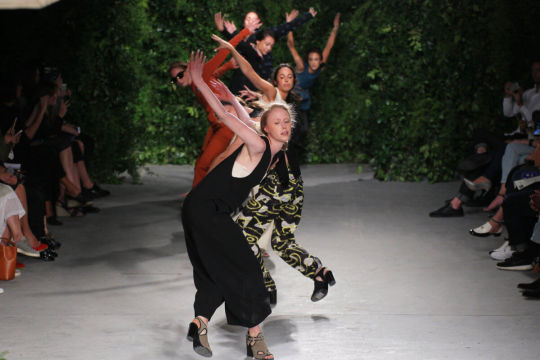
Opening Ceremony SS16 runway. Courtesy of Getty Images.
The clothes were exquisitely business casual in a way only fashion-business can be. Fringed skirts, knee-grazing dresses and wide silk trousers are to arm for the humid and hectic city, coming spring and summer 2016.
Rag & Bone
Rag & Bone kept to its urban doctrine. Like Opening Ceremony, the brand caters to the girl that doesn't dress for the boys.
Slip dresses reaching past the knee were paired with sneakers and heavy jackets obscured any possible outline of the torso. There was a very fetching navy playsuit. In the white, black and navy blue palette, Rag & Bone is a reliable uniform for the cool, calm, and collected with an edge.
Rough textiles and wide silhouettes dominated the collection. Chunky knitwear was the stylish solution for early spring temperatures. And of course, Rag & Bone's signature bomber jackets made a comeback.

Backstage Rag & Bone SS16. Photography by Paolo Musa.
There is a distinct sense that costume and personal aesthetic are being hungered for again. A costume as uniform unique to the individual, physically displaying their personality. At Rag & Bone, it is a palpable lean away from form-accentuating basics, bling and bedazzle which dominated the 2000's. Instead, the brand is giving a chic embrace to indie sleaze subculture.
Givenchy
Try pyjamas and lingerie as workwear. Don't be intimidated, Givenchy is making a case that sleepwear with a blazer on top is boss.


Givenchy SS16 runway. Courtesy Vogue.com.
Although it was Ready-to-Wear, a lot of the looks at Givenchy featured Couture-worthy opulence and craftsmanship. Nightgowns and silk robes galore, designer Ricardo Tisci said he was aiming to marry the bridal gown and tuxedo.
I took a trip down the very beautiful Givenchy + Tisci memory lane. Textured gowns, fringed dressed (now brought back with actual hair), and gradient feathers were a staple of the designer's tenure since about 2013. I don't at all mind the reoccurring themes, especially worn by his muses, among who is actress Rooney Mara.
The pièce de résistance was certainly the bridal gown of the destination wedding to the swampy fields of Glastonbury music festival. Flowing from a see-through tank top, the sweeping white skirt was feather-garnished and muddied to a rich brown trim at the bottom.
Diane von Furstenberg
Diane von Furstenberg breaks the monochromic chain with pinks and patterns. And she'll do it again! There were silk playsuits, fifties silhouettes and high-waisted everything. The lightweight, printed fabric of dresses and signature cut is the DVF uniform.

Diane von Furstenberg SS16 runway. Courtesy of Marie Claire.
This season, the iconic brand suggests their wearer take a vacation to warm destination of choice. The model lineup, consisting of Karlie Kloss and Kendal Jenner, showcased glowing tans, beachy blowouts with tropical flowers in the coiffure, and boho accessories.
Such colourfullness is lacking in my personal wardrobe, but there is something to be appreciated about the Studio 54 and Vogue offices-favoured dress making a juxtaposing appearance somewhere sunny for once.
Alexander Wang
Back to navy and khaki and lots of black. This is Alexander Wang. Here, the cut of cloth is purposeful and utilitarian, with party embellishments!
If the Alexander Wang runway was in fact a party, I would feel right at home. With a lack of clubbing-designated clothes, the brand's patron is one who came into a club wearing her regular clothes, plus incredible platforms.

Alexander Wang SS16 runway. Courtesy of Isidore Montag.
Grungy plaid button-downs, printed, high-waisted pants, a wine-red jacket in patent leather, more pyjama tops posing for button-downs, leather pants, and a man in dungarees. What’s not to love?
And if you’re amongst the hoard purchasing a fashioned military jacket this season, consider the groovy khaki one with black leather fringe (fringe, fringe, fringe).
Beyond performance, designers dip into new silhouettes. Bold and structured garments outnumber the form-fitting across most collections. Personality saturates the racks in diverse cuts and colours. And it is incredibly refreshing to see. Telling stories through clothes is the reason designers craft and wearers acquire.
6 notes
·
View notes
Quote
Lo!... JEHOVAH OKCULT BUSINESS [JOB] WITNESS [JW] this Silent 1968 [VI] 9 Ether Gen X PLUTOCRAT’s GOLDEN 9 Ether Ægiptian QHT IBM [Qi] APPLE LLC in Downtown San Diego CA… as Immaculately MANIFEST [I’M] ANU… Highly Official… U.S. Ancient [USA = PREDYNASTIC] FUTURISTIC 9 Ether GLOBAL FINANCIAL MANAGEMENT EMPIRE [ME] of SIRIUS Astronomically Intelligent ANUNNAKI [AIA = AMÚN] SUN GOD [RA] MEMORY [RAM = RAMESES] TECHNOLOGIES from MAMI NINTI's MOST HIGHEST 9 Ether ALUHUM ANUNNAGI CHRIST PEOPLE of MANSA MUSA’s 144,000 NANOSCOPIC Identities Biochemically Introducing Ribosomes w/UNICELLULAR [NIBIRU] ORGANS of SIRIUS UNSEEN NANO [SUN] BIOTECHNOLOGICAL Light Elements Genetically [LEG] MATERIALIZING from Planet RIZQ's 8th Tri-Solar SUN Systems of UTU + AFSU + SHAMASH’s Hi:teKEMETICompu_TAH [PTAH] SKY PORTALS of Crystallized [PC] Airborne Cloud Particle Photons from ORION’s PARALLEL [POP] Northern MOON Universe [MU] of Inner Earth’s [HADES] Most Darkest [Occulted] Interplanetary BLACK SOLAR SUN [SUL = SOUL] Earth of Equatorial [SEE] Latitude [EL] & Longitudinal [EL] Temperatures [E.T.] from the Tropical [E.T.] Interstellar BLACK SOLAR SUN [SUL = SOUL] Hemisphere of ZETA RETICULI's InterDimensional [I.D.] 9 Ether ETHERIAN MOON Universe [MU] MILITARY [MUM]… of the DOGON's Interplanetary GODS who Imported GOLD to the ILLYUWN [IGIGI] STAR GALAXY of AFSU’s GOLDEN Equatorial LUNAR [EL] North Star [POLARIS] Pole Altitude [PA] of Atmospheric [PA] Earth Grid Coordinates Mapping ILLUMINATED [MI = MICHAEL] BLACK SOLAR SUN [SUL = SOUL] PORTALS 2 PANGÆA's Intergalactic SUPERCONTINENT Earth Altitude [iSEA] HEAVENS of Interstellar [HI = HITTITE] 8G Holographic MOON Crystal Images [MCI] Projecting ANU [PA] 9 Ether ETHEREAL SUN Visual @ the Quantified Speed of UTU’s Lunar [SUL] Light 186,272.396 mi/s from Planet RIZQ's Most Darkest [Occulted] Triple 666 [IX] BLACK SOLAR MAPPING SYSTEMS of Ubiquitous NIBIRU [SUN]… 900 MILLION AZTECAN Years Ahead [MAYA] of Lost 2022 [VI] America
MU:13

YOU STILL DISTRACTED BY MAINSTREAM MEDIA 4 DUMMIES IN 2022???



SHADOW BAN ME




SHADOW BAN ME



SHADOW BAN ME
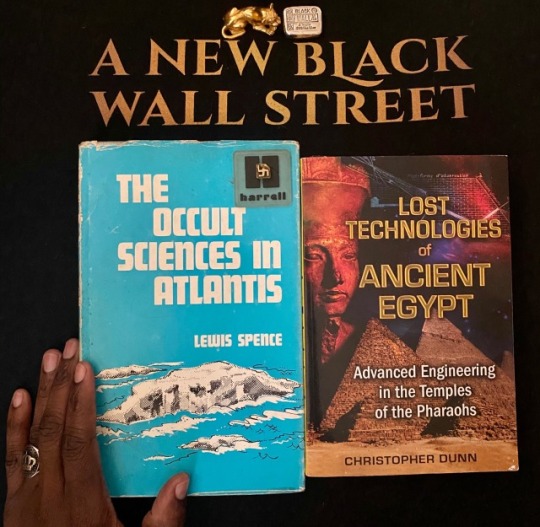
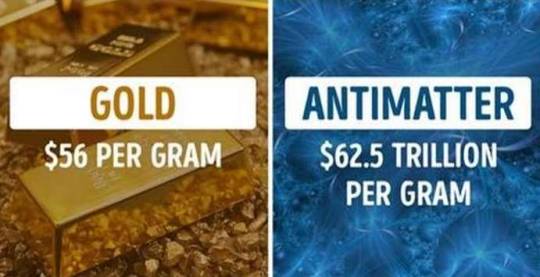





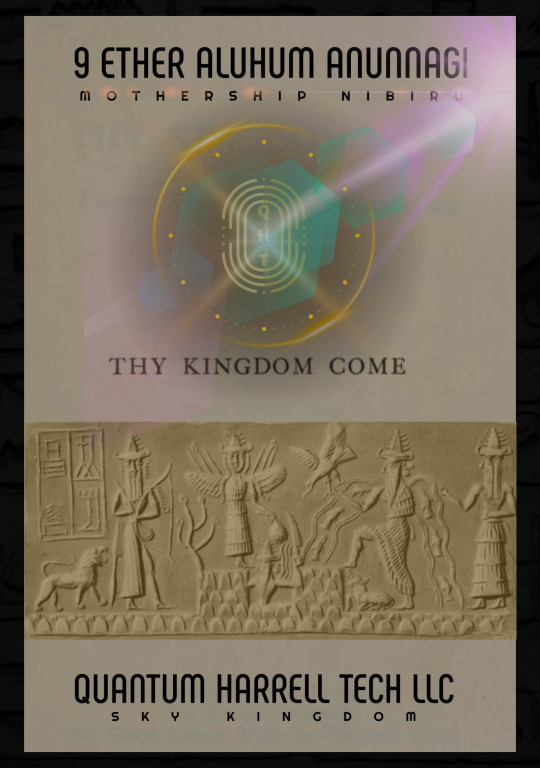




















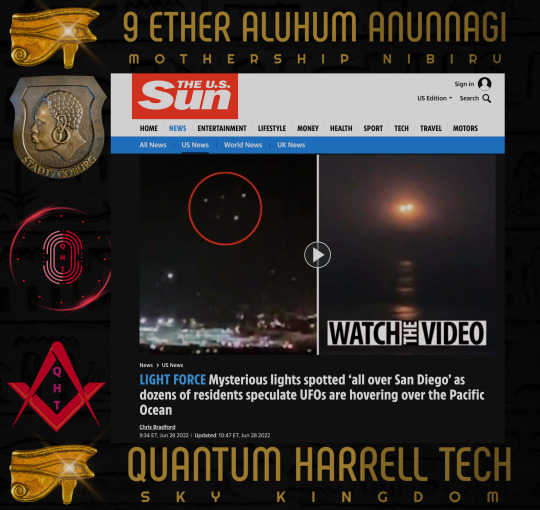






PENTAGON’S SECRETARY OF DEFENSE LLOYD JAMES AUSTIN III






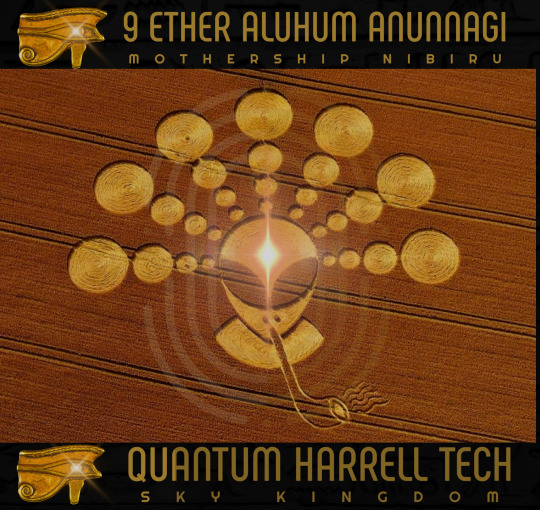

everything you think you know about earth’s infinite history is FALSE

#quantumharrelltech#harrelltut#kingtutdna#ANU 9 ETHER WORLD ORDER#MU:13 Occult Tech Illuminati#qht igigi [Qi]
1 note
·
View note
Text
Bananas: Nature's Nutrient Powerhouse
Bananas, those delightful tropical treats, are more than just a tasty indulgence; they are a treasure trove of nutritional goodness. Universally adored and cultivated, bananas stem from various species of herbaceous flowering plants within the Musa genus. Packed with an array of essential nutrients ranging from carbohydrates to vitamins, minerals, and antioxidants, bananas stand out as a powerhouse of health benefits, contributing to overall vitality and well-being.
Central to the nutritional profile of bananas is their carbohydrate content. Serving as an excellent source of energy, bananas provide a natural boost, particularly advantageous for athletes and those leading an active lifestyle.
Beyond carbohydrates, bananas boast an impressive lineup of vital nutrients. Potassium takes the spotlight as a prominent nutrient in bananas, playing a pivotal role in maintaining optimal heart function and regulating blood pressure. Regular consumption of potassium-rich foods like bananas may aid in reducing blood pressure levels and mitigating the risk of cardiovascular ailments.
Vitamin C also shines as a key component of bananas, acting as an essential antioxidant that bolsters immune function and fosters collagen production, thereby supporting healthy skin and facilitating wound healing. Additionally, bananas harbor catechins, a class of antioxidants renowned for their potential in promoting heart health and enhancing metabolic well-being.
Furthermore, bananas contain resistant starch, a type of carbohydrate that eludes digestion in the small intestine and serves as nourishment for beneficial gut bacteria residing in the colon. This prebiotic effect of resistant starch fosters a thriving gut microbiome, correlating with enhanced digestive health and bolstered immune function.
The consumption of bananas has been associated with a multitude of health benefits, notably contributing to improved heart health. Potassium-rich bananas aid in regulating blood pressure, thereby diminishing the risk of hypertension and cardiovascular diseases. Moreover, the fiber and antioxidants present in bananas contribute to reduced cholesterol levels and optimized heart performance.
Bananas also play a pivotal role in nurturing digestive wellness. The amalgamation of dietary fiber and resistant starch in bananas supports regular bowel movements and wards off constipation. Additionally, bananas contain compounds that safeguard the stomach lining against ulcers while fostering the proliferation of beneficial gut bacteria.
Incorporating bananas into one's diet is effortless and versatile. Whether savored as a convenient snack on-the-go, blended into refreshing smoothies, or paired with breakfast cereal, bananas offer a delectable and nutritious addition to any meal. However, it is prudent to consume bananas in moderation, considering their relatively high natural sugar content.
For more information visit us:
0 notes
Text
IJMS, Vol. 25, Pages 3420: MaSMG7-Mediated Degradation of MaERF12 Facilitates Fusarium oxysporum f. sp. cubense Tropical Race 4 Infection in Musa acuminata
Modern plant breeding relies heavily on the deployment of susceptibility and resistance genes to defend crops against diseases. The expression of these genes is usually regulated by transcription factors including members of the AP2/ERF family. While these factors are a vital component of the plant immune response, little is known of their specific roles in defense against Fusarium oxysporum f. sp. cubense tropical race 4 (Foc TR4) in banana plants. In this study, we discovered that MaERF12, a pathogen-induced ERF in bananas, acts as a resistance gene against Foc TR4. The yeast two-hybrid assays and protein-protein docking analyses verified the interaction between this gene and MaSMG7, which plays a role in nonsense-mediated #RNA decay. The transient expression of MaERF12 in Nicotiana benthamiana was found to induce strong cell death, which could be inhibited by MaSMG7 during co-expression. Furthermore, the immunoblot analyses have revealed the potential degradation of MaERF12 by MaSMG7 through the 26S proteasome pathway. These findings demonstrate that MaSMG7 acts as a susceptibility factor and interferes with MaERF12 to facilitate Foc TR4 infection in banana plants. Our study provides novel insights into the biological functions of the MaERF12 as a resistance gene and MaSMG7 as a susceptibility gene in banana plants. Furthermore, the first discovery of interactions between MaERF12 and MaSMG7 could facilitate future research on disease resistance or susceptibility genes for the genetic improvement of bananas. https://www.mdpi.com/1422-0067/25/6/3420?utm_source=dlvr.it&utm_medium=tumblr
0 notes